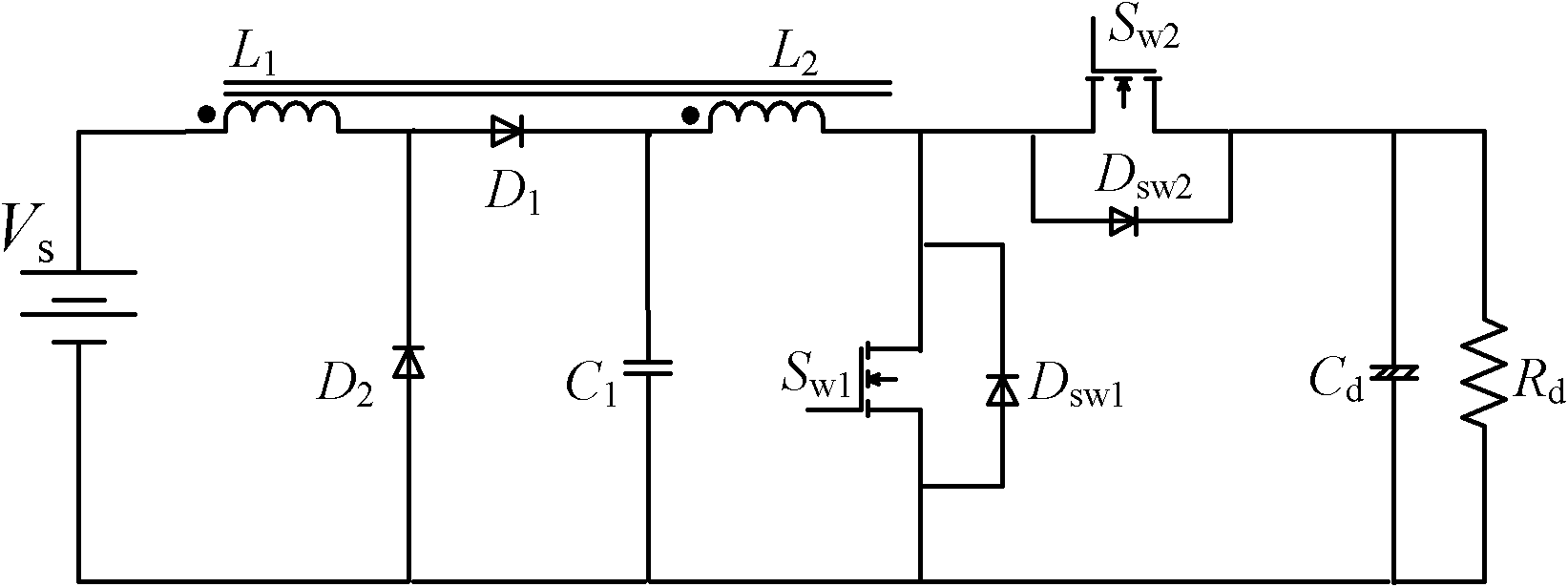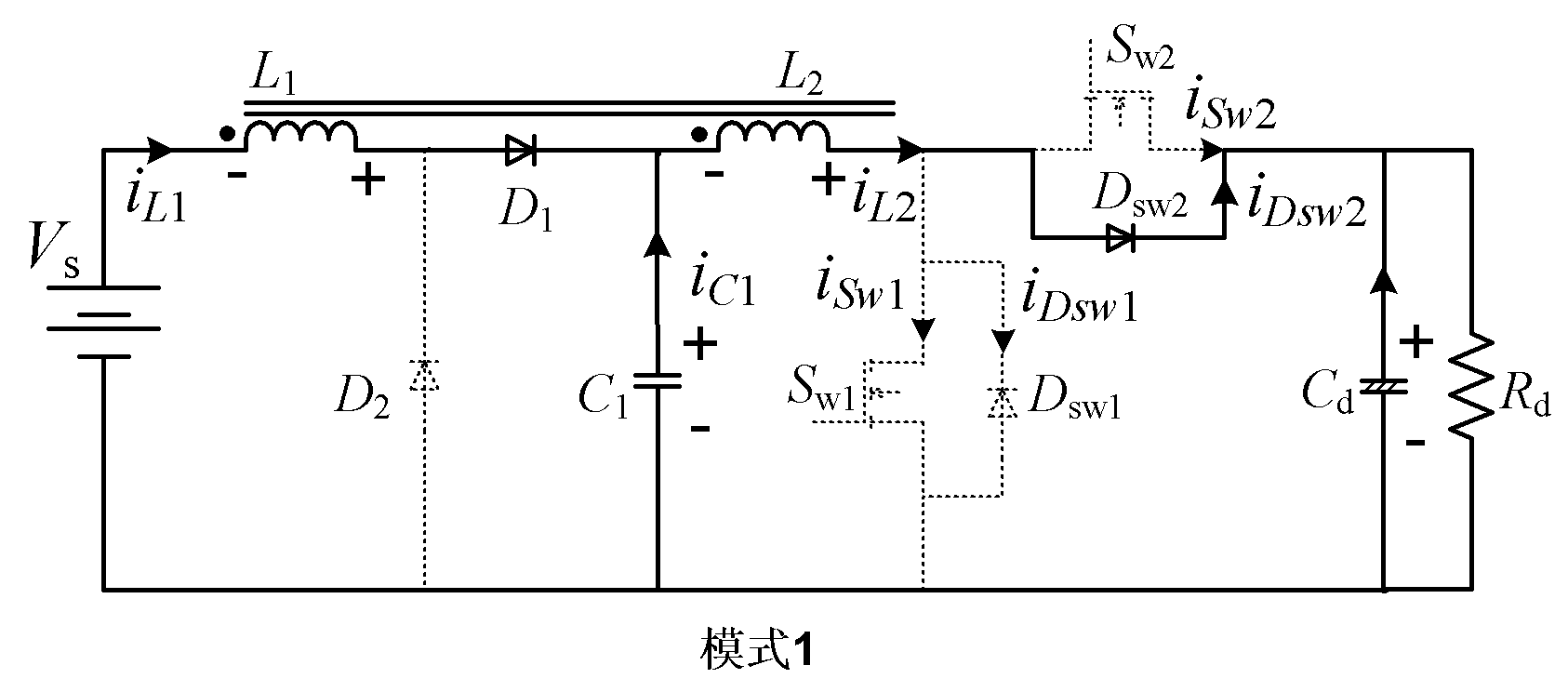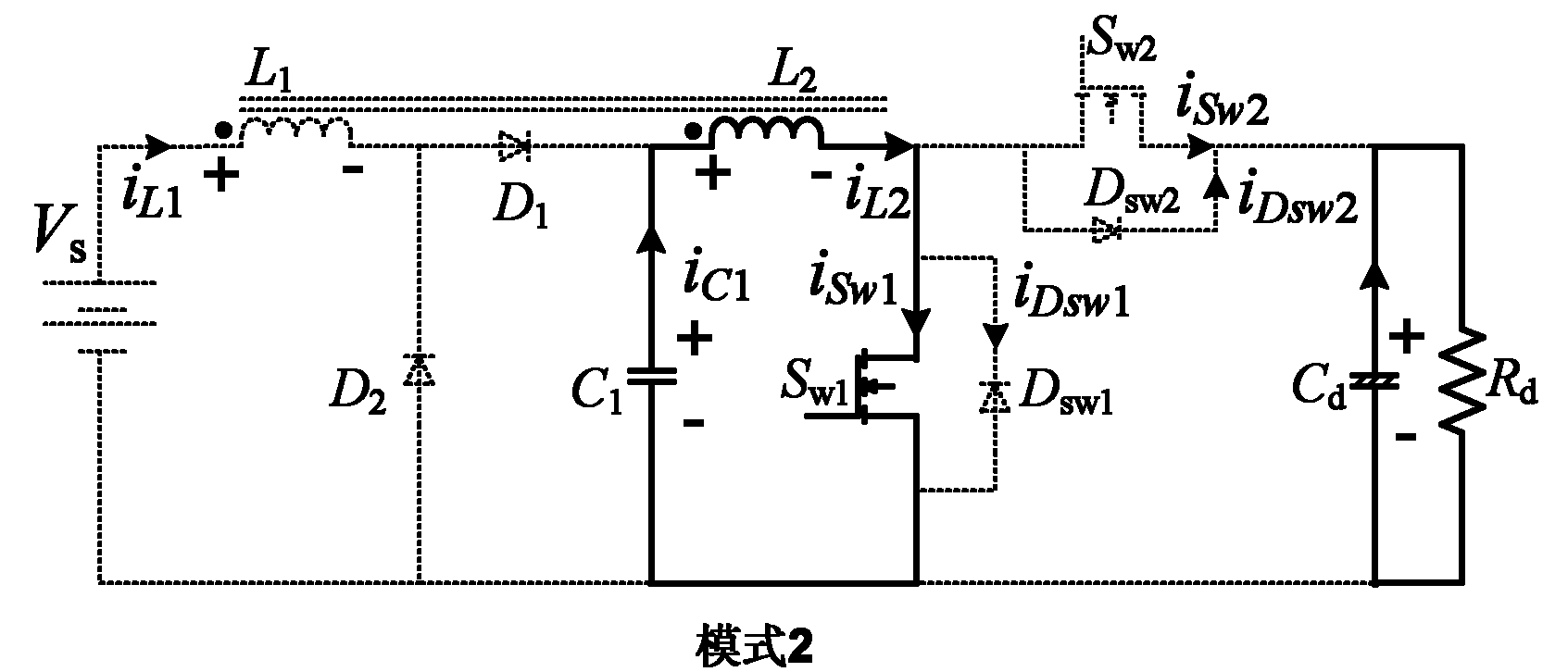DC-DC converter based on coupling inductors
A DC-DC and coupled inductor technology, applied in the field of converters, can solve problems such as reduced reliability of equipment, high voltage stress of switch tubes, and complex design, and achieve the effects of reducing peak voltage stress, increasing boost ratio, and improving efficiency
- Summary
- Abstract
- Description
- Claims
- Application Information
AI Technical Summary
Problems solved by technology
Method used
Image
Examples
Embodiment Construction
[0019] The present invention is described in detail in combination with specific embodiments and accompanying drawings.
[0020] Such as figure 1 As shown, the bidirectional DC-DC converter of the present invention includes a coupled inductor L 1 , L 2 , two diodes D 1 、D 2 , a snubber capacitor C 1 , power supply V S , filter capacitor C d , load R d and two power switches S w1 , S w2 . Two coupled inductors are coupled to each other by sharing an inductor core. Coupled inductor L 1 The end with the same name is connected to the positive pole of the power supply, and the other end is connected to the diode D 1 anode, diode D 2 The cathode is connected to the diode D 1 Cathode and coupled inductor L 2 Connected to the terminal of the same name, the coupled inductor L 2 The other end is connected to the power switch tube S w1 Drain, S w2 source connected. S w1 source and capacitance C d , capacitance C 1 connected, the switching tube S w2 Drain and Capaci...
PUM
 Login to View More
Login to View More Abstract
Description
Claims
Application Information
 Login to View More
Login to View More - R&D
- Intellectual Property
- Life Sciences
- Materials
- Tech Scout
- Unparalleled Data Quality
- Higher Quality Content
- 60% Fewer Hallucinations
Browse by: Latest US Patents, China's latest patents, Technical Efficacy Thesaurus, Application Domain, Technology Topic, Popular Technical Reports.
© 2025 PatSnap. All rights reserved.Legal|Privacy policy|Modern Slavery Act Transparency Statement|Sitemap|About US| Contact US: help@patsnap.com



